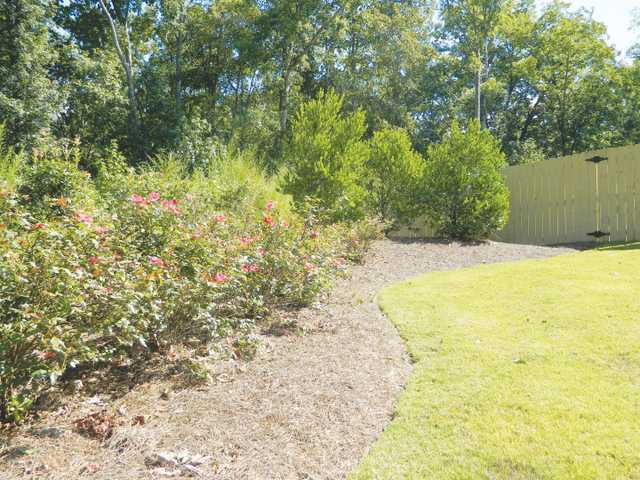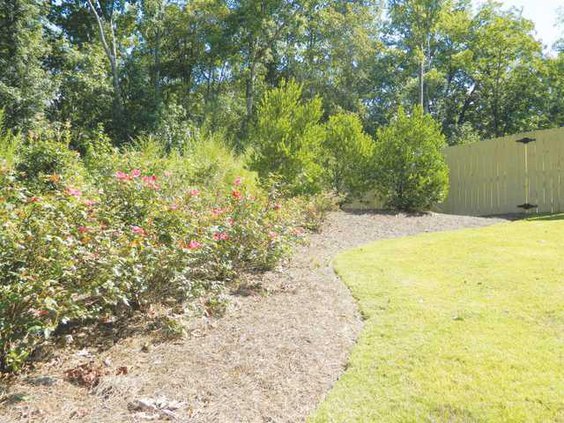Fall series lunch and learn
Sponsored by the Hall County Cooperative Extension and the Hall County Library System
When: noon to 1 p.m. Wednesdays in September
Where: Spout Springs Library, 6488 Spout Springs Road, Flowery Branch
How much: Free
Contact: 770-535-8293
Scheduled topics
Sept. 14: Fall Garden Prep: Steps to Creating a Garden Bed
Sept. 21: Year Round Color in Your Garden
Sept. 28: Open Garden Forum: Q&A
Although the cooling temperatures and dreary sky don't inspire most folks to piddle around in their gardens, now's the perfect time to get in a little quality time.
As most plants are nearing their dormant phase, the time is just right to plot out spring gardens and landscape improvements.
One of the first steps in the planning process would be to conduct a site analysis to determine your soil's pH.
"The pH in the soil is what allows nutrients to become accessible to places," said Michael Wheeler, Hall County UGA Cooperative Extension coordinator.
"If the pH is too low, your overall fertilizing efforts get wasted. Most ornamental plants prefer a soil pH between 5.2 and 6.5."
Wheeler was speaking to attendees of a recent lunch and learn presentation at the Spout Springs Library in Flowery Branch. The event was sponsored by the Hall County Cooperative Extension and the Hall County Library System.
For an $8 fee, residents can bring in a sample of their soil into the extension office for testing. The soil samples are sent to the University of Georgia for analysis.
"You want to collect 10 to 12 samples from (your front, back and side) yard," Wheeler said.
"I would suggest systematically taking samples every 15 to 20 feet."
Unless some portions of your yard have been treated with materials that would alter the soil's pH, all of the samples can be placed in a single bucket. If an area has been used as a garden, or treated with fertilizer, you would want to keep that sample separate.
"Once you get all of your samples in the bucket, mix them up so that you get one, uniform sample," Wheeler said.
"We need about a pint of soil for testing."
When collecting soil for a sample, Wheeler says that in most cases, you wouldn't need to dig deeper than 4 to 6 inches.
"If you're planting fruit trees, you would want to go a little deeper," Wheeler said.
Once you know the pH level of your soil, you can determine what needs to be done to increase or decrease alkaline levels. If you need to raise the pH, adding lime to the soil can do the trick. Although lime takes longer to display visible results, Wheeler says it is a less expensive alternative to fertilizer.
The next step in analyzing your site would be to determine your soil's moisture levels.
"One way to measure that is to dig a hole in your yard and fill it up with water. If it drains out in six to eight hours, you're good to go. Four hours is really ideal," Wheeler said.
"But if you come back the next morning and it's still full of water, you know you need to change your plant list to ones that can stand wet (roots)."
Too much water can be just as harmful as too little.
"Most plants are killed because people are overzealous with watering," Wheeler said.
"Even in a drought, we see a lot of root rot situations.
If your yard's overly-moist condition is natural and not man-made, there are ways to work around that. You can select plants that are adapted to wet soils, install a below-ground drainage pipe, or bring in extra soil to create an elevated, garden bed.
If your soil is more on the dry side, you'd want to choose plants that can survive in drought conditions.
"If you can't modify your site, modify the plants that you use," Wheeler said.
Once you've analyzed your soil situation, you want to turn your attention to potential plant placement.
"You probably want to avoid putting things right next to a driveway where you get a huge flush of water (during a rainfall) and then it goes dry three or four days after it rains and stays really dry," Wheeler said.
"Plants like consistency, so when you go with these extreme fluctuations, that does put a lot of undue stress on certain plants.
"You may also get an issue with heat coming from pavement and asphalt and that could stress the plants also."
When designing your landscaping and selecting plants, you also want to pay attention to how much sunlight and shade an area receives.
"Some plants like deep shade, others like full sun. It's all about planting the right plant at the right site," Wheeler said.
"Even if you use native plants, that doesn't guarantee they will work on your site. You have to use plants that are suitable for your specific conditions."

